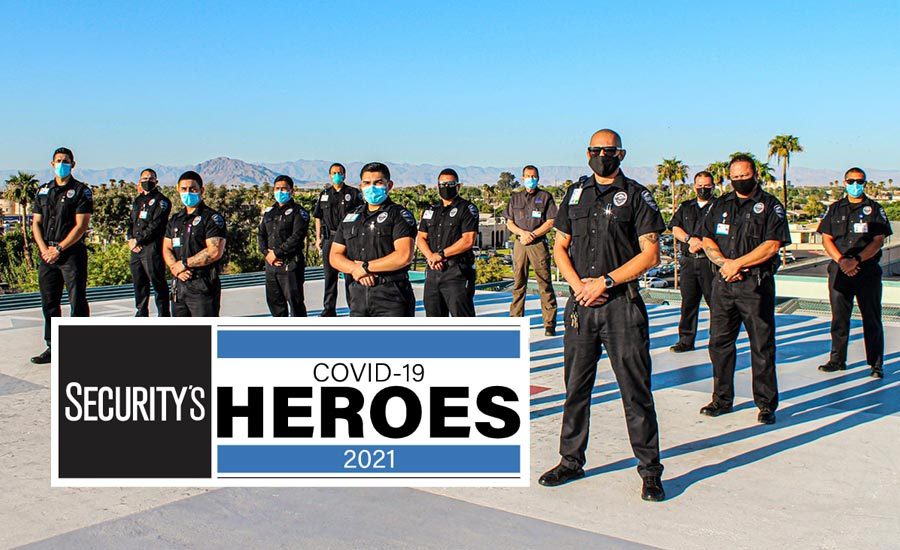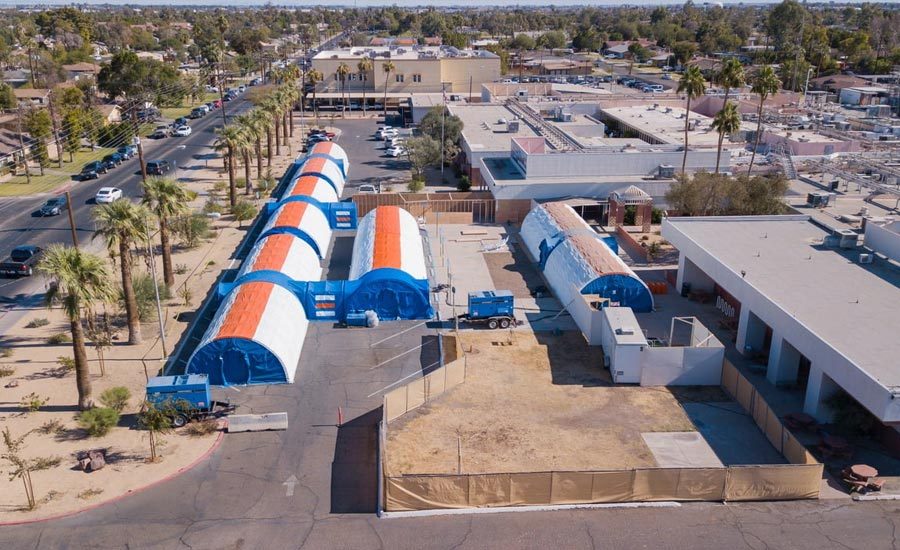El Centro Regional Medical Center (ECRMC) is one of only two hospitals in a 4,800-square-mile county in southeastern California. Just 10 miles from the Mexican border, the hospital is the first point of care for many immigrants and American citizens who live in Mexico but cross in to the United States.
Even before the onset of the COVID-19 pandemic, ECRMC was already strained with serving a very challenging payor mix. As the virus began to spread, the hospital faced an overwhelming influx of COVID-19 patients, positioning it under further pressure of not just finances, but caregiver ratios and patient family members who suddenly were unable to accompany their loved ones into the hospital.
The Security Department at ECRMC was put to the test, tasked with supporting the expansion of the hospital’s patient load to 50% above licensed capacity – far beyond any patient census in the hospital’s history. William DuBois, Security Department Manager at ECRMC, led the physical security through the pandemic, ensuring the Department’s updated mission of assuring the safety and security of patients, staff and visitors while maintaining the assets and business continuity of the hospital. The Security Department is a diverse team, DuBois says, with dedicated officers who feel mission-driven to provide a caring and sensitive environment for people seeking medical care.
Though DuBois has more than 40 years of experience in public safety, emergency planning, emergency response, emergency medical care, he says, nothing could have prepared him for the COVID-19 pandemic and for its large scale outbreak and impact across the world and in El Centro, Calif. “We started by adding one expansion tent at a time, thinking that would help with patient load, and added that area to our patrol and monitoring routine,” he says.
Within a month, however, DuBois and the Security Department realized they were way beyond their present staffing’s ability to provide the expected level of protection to a relatively large area of responsibility and so many more employees. Prior to the pandemic, the Security Department handled five helicopter landings per week for patient transfers to big-city medical centers. At the peak of the crisis, the department was handling five landings per hour.
DuBois successfully pivoted his emergency response process to keep up with the hospital’s shifting needs during the COVID-19 crisis. The Security Department began to attend new daily management meetings with all other department heads, including the nursing department, to assure good cross-departmental information exchange on a daily basis. Moreover, the department supervisor began to report to an Associate Administrator who directly reports to the CEO, helping elevate the Security Department's standing in the organizational chart to reflect its importance to the success of the hospital's mission.
The Security Department further increased its rounds in the in-patient areas, increased communication with nursing administration, began to participate in Environment of Care and Workplace Violence committees, as well as other hospital interdisciplinary teams.
DuBois and the Security Department also modified scheduling from 40-hour weeks to 48-hour weeks until additional security officers could be on-boarded, and went into a hiring frenzy for more security officers. “Because our standards for Security Officers are high and we compete with several federal agencies for licensed security guards, it wasn’t easy to fill the available positions that we added. We added regular rounds in the new patient tents, and oriented all the new patient-care employees,” DuBois explains. “The hospital ramped up its patient-care staffing with temps, travelers, and new hires. These nurses and doctors rotated in and out fairly regularly, so we were always helping new medical staff learn the hospital grounds, security procedures, parking rules, neighborhood, and so forth.”
Perhaps the toughest part of the Security Department’s job during the pandemic has been managing the in-patient visitor restrictions, DuBois says. “We had never had to time a family visit to a dying relative before and remove the family after the limited time had elapsed.”
With the support of the CEO, administration team and governing board, the Security Department modified security and safety procedures, doing so with a high-level of respect and empathy to the patient and the patient’s families. “We know the frustration and anger that comes from not being able to visit a family member who is hospitalized. The nursing administration helped orient us as to the restricted visitation polices, the reason for the restrictions, the few exceptions (such as final visitation of a dying patient), and other similar procedures. The hospital administration made sure that there was plenty of emotional care for all employees, not just nurses and security, but dietary, EVS, maintenance, and admin staff. It was tough on everyone, the hospital administration, and our Quality department in particular, that went out of their way to provide stress relief and prevention through a variety of programs and services,” DuBois explains.
Though there had always been a problem with disturbed patients and individuals perpetrating violence and committing property damage, the pandemic worsened workplace violence. “Our contact with non-patient homeless and psychiatrically challenged individuals increased, so we needed additional self-defense tools,” DuBois says.
Luckily, DuBois had instructor certifications in the use of self-defense tools from his military reserve experience and was able to provide the previously unarmed security officers with valuable training and tools, such as protective equipment, handcuffs and pepper spray. Though he didn’t have to “reinvent the wheel,” he says, he reached out to peers via the International Association for Healthcare Security and Safety Foundation (IAHSS), and had several examples of policies and procedures to model their new policies after. “We stress de-escalation at all levels of the hospital and our security team is committed to that. That’s one of the qualities we look for during the hiring process – not a cowboy who wants to control people, but rather that helping attitude that prefers cooperation to confrontation.”
Overall, the Security Department adapted, acted professionally and sacrificially to maintain a compassionate, yet firm security presence, resulting in an orderly continuation of patient admissions and continuation of patient care. “With our constant visibility on preventative patrol, as well as our professional conduct on incident response, the Security Department was able to protect the hospital’s people, patients, property and ensure business continuity. Our response helped everyone, including the C-suite, recognize Security’s value and treat security as an investment, rather than merely a cost center.”






